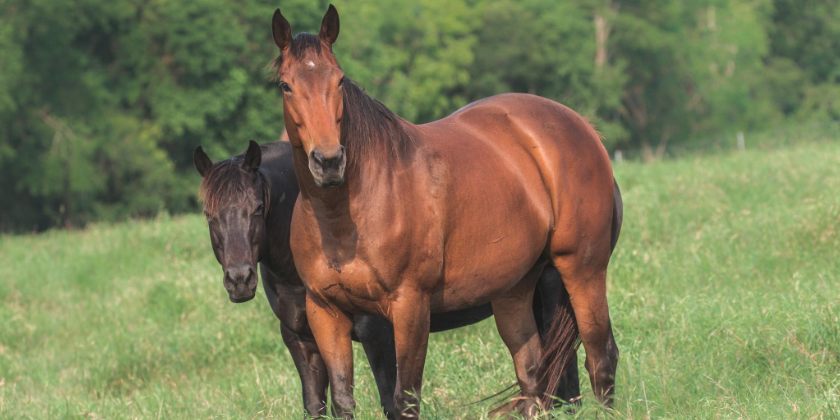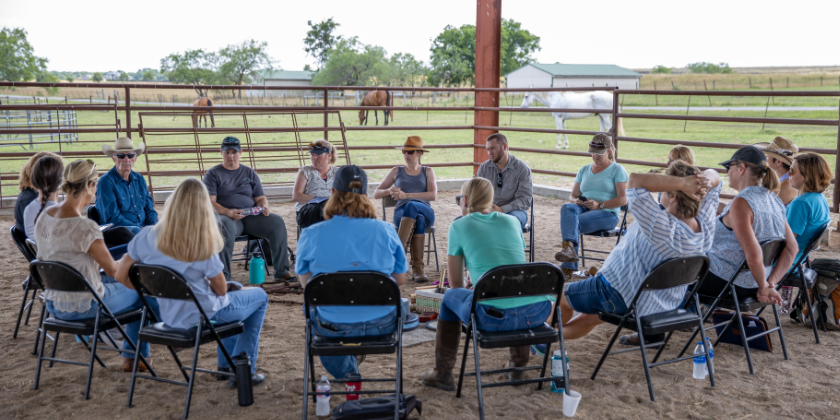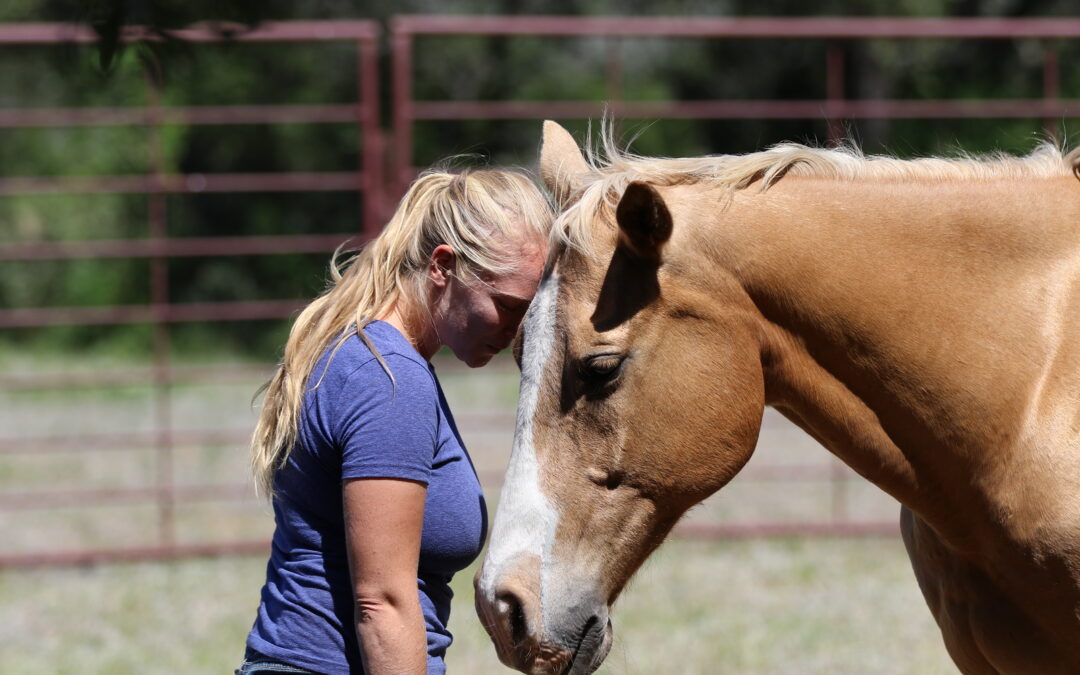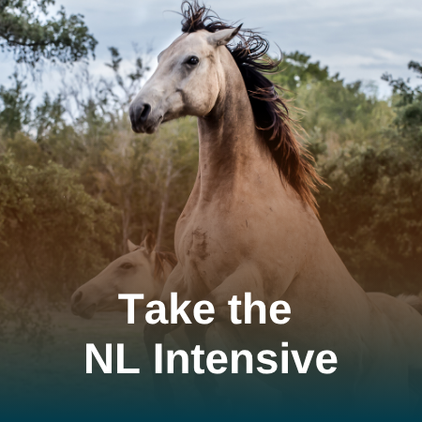
NL Membership: A Constellation of Learning, Practice & Community
Constellations are landmarks. They are a guide and a navigational tool. But they are not formed by going from Point A to Point B.
You need at least three stars to form a constellation.
The same is true for your learning journey with Natural Lifemanship.
We often think of a learning journey as one with mileposts that we use to figure out how far along we are relative to “the end” or finish line.
At Natural Lifemanship, we invite you to think about your learning journey as one made up of constellations, not mileposts. It’s not about going from start to finish, but about uncovering clusters of meaning along the way.
Those clusters are made up of opportunities to learn, to practice, and to grow in community. This is exactly why we created the Natural Lifemanship Membership many years ago.
Build your constellation with NL Membership
Here are some ways we create constellations within NL Membership to move you toward your goals:
Learning
Membership includes over 100 hours of videos and compilations, more than 45 CE credits currently available, and videos and courses being added regularly. Take a look at the content lineup below to see exactly what you’ll have access to as an NL Member!
Practicing
Free events for Members, plus discounts on select events to practice what you’re learning. This includes:
- Building Your Resilience workshops
- Community Based Specialty Courses
- Conferences
- Connection Kits
- Other products
Connecting
Connect with your peers and build a community of supportive colleagues through:
- Our online community for members through Circle
- Community Connection Circles
- Coffee & Horses virtual meetups
- Networking opportunities
This is just the beginning of what you get with NL Membership. We will be announcing new opportunities to connect and learn in person this year, too!
Membership Content by Category
Here’s a look at Membership content by category, along with descriptions and CEs, where available.

NL BASICS
>13 hours of video; 9 CE credits available
Animal Welfare Issues are also Clinical Issues
Tim Jobe and Bettina Shultz-Jobe discuss how to recognize animal welfare issues, including those that lead to behavior issues and burnout. They share how a lack of awareness in this area can impact our clients.
1 Hour/0 CEs
Distance Doesn’t Have to Mean Disconnection
Learn about the foundational role that detachment (physical distance) plays in forming a secure attachment. Learn how we can help ourselves and others get the relational experiences we didn’t get during development.
1 Hour/1 CE
Doing Attachment-Based Work
Gain a concrete understanding of attachment-based work, why it is important, and why understanding attachment-based work is critical when doing telehealth or transitioning between in-person and telehealth sessions.
1 Hour/1 CE
Introduction to NL
Learn the history and big ideas of Natural Lifemanship, how Natural Lifemanship principles are applied in relationships with horses, and how the NL principles facilitate connection and healing.
1 Hour/0 CEs
Introduction to NL and Trauma Informed Care for Service Organizations
This course lays a foundation for shifting organizational culture to become more trauma informed. Learn trauma-informed principles for building connected relationships that help to heal and reorganize the brain.
4.5 Hours/4.5 CEs
Natural Lifemanship Trauma Informed Care for Parents and Caregivers
NL co-founders, Tim and Bettina Jobe, teach parents relationship principles that help children learn to self-regulate and build healthy relationships, and why these are important especially when parenting children who have experienced trauma.
2.25 Hours/0 CEs
Support or Rescue
Bettina Shultz-Jobe discusses the difference between offering support and rescuing in the context of the therapeutic relationship. She discusses why this matters from a neurobiological and attachment perspective.
1 Hour/0 CEs
Trauma Informed and Developmentally Sensitive Schools
Learn science-based principles for creating trauma-informed and developmentally sensitive classrooms and schools. NL relationship principles provide a framework for translating principles into effective practices.
2.25 Hours/2.25 CEs
Trauma Informed Care and Trauma Informed Relationships are for Everyone
The truth is that most of us have experienced some level of trauma. Trauma informed care (TIC) is about becoming empowered to organize or reorganize the brain by understanding how the brain and body develop.
1 Hours/0 CEs
When Two Cultures Collide
Tim and Bettina discuss belief systems and principles that have historically prevailed in the horse world creating cultures that may collide or that may coalesce to bring about health and healing for horse and human, alike.
1 Hours/0 CEs

CONNECTED HORSEMANSHIP
>25 hours of video
Catching Your Horse with Connection
Watch as Natural Lifemanship trainer, Tanner Jobe, demonstrates and explains how to catch and halter a horse with connection.
.25 Hours/0 CEs
Centering
Learn a process for becoming more present to yourself and others. Shannon Knapp demonstrates a process of centering as a way to get in touch with yourself prior to engaging with a horse.
.25 Hours/0 CEs
Connected Horsemanship Deep Dive Workshop
Learn how the process of building a connected relationship in Natural Lifemanship is guided by principles and by a particular responsiveness to THIS relationship, rather than by techniques uniformly applied to all relationships.
3 Hours/0 CEs
Determining if the Relationship is Ready for Riding
As the relationship between a client and horse progresses, the therapy team and the client may decide it’s the right time to explore connection while mounted; however, how do they know if the client’s horse is ready for this next stage of intimacy?
.25 Hours/0 CEs
Developing Felt Safety with Attachment and Detachment
In this video, Tanner works with a new horse named Lizzie and demonstrates how to ask for connection through attachment and detachment. The goal is for Lizzie to stay connected, even in more stressful or unfamiliar spaces.
1 Hour/0 CEs
Equine Essentials: Body Language, Posture, Expressions, and Movement
There are a lot of opinions in the field about what various horse behaviors and physical cues mean; but in any relationship, and especially those with our equine companions, understanding body language and behavior is actually very nuanced. With this course, you will gain skill and confidence in your interactions with horses. Learn the essentials to better understand, care for, and connect with horses. This series is ideal for all equine-assisted/facilitated practitioners and especially those who apply the Natural Lifemanship process. To offer this series, we partnered with horse trainer and riding instructor, Callie King.
1.5 Hours/0 CEs
Facebook Live Collection – Connected Horsemanship
Each video in this collection was originally shot and shared via Facebook Live. Observe the many nuances of building connection in each encounter between a particular human and a particular horse at a particular moment in time.
6 Hours/0 CEs
Haltering with Connection
How might we approach a routine task such as haltering as an opportunity to build connection in our relationship with our horse? Tanner demonstrates how he asks Oreo to be connected and to say “yes” to being haltered.
.5 Hours/0 CEs
Integrating Equine Bodywork in TF-EAP
Learn to apply NL principles while connecting with your horse through equine bodywork. Learn a simple technique to help your horse release tension and learn how the technique may be incorporated into work with clients using the NL process.
2 Hours/0 CEs
Learning about Connection with a Wild Horse
NL co-founder, Tim Jobe, demonstrates how he begins to work with a wild horse in ways that build connection. He discusses how he applies the NL principles throughout the process.
.5 Hours/0 CEs
Relationship Basics with Frieda
In this series of 19 videos, Tim and Bettina build a connected and cooperative partnership with their rescue horse, Frieda. Learn the nuances of the NL process through this series of demonstrations.
4 Hours/0 CEs
Tanner & Nina: Preparing for Mounting
Tanner builds his relationship with Nina starting with asking her to attach in the pasture to follow him into the covered arena. Once in the arena, they work on refining their attachment and detachment and positioning around the mounting block.
1.5 Hours/0 CEs
The Complexity of Touch
NL is a practice of restoring and repairing connection in our relationships whenever and however it is lost. Trust and intimacy are built through thousands of micro-repairs. Bettina and Tanner work on restoring connection around touch with Apollo.
3 Hours/0 CEs
The Process of Mounting at Liberty
Tanner works with Lady to help her become comfortable positioning her body around the mounting block. Through working on connection they build the trust and communication needed for mounting.
1.5 Hours/0 CEs
SPECIFIC POPULATIONS
>12.5 hours of video; 12.5 CE Credits available
NL for Groups
NL Trainers, Sara Sherman of Discovery Horse and Reccia Jobe of Pecan Creek Ranch, teach and model just how easy and effective it can be to incorporate NL principles into a variety of group settings.
3.25 Hours/3 CEs
NL for Veterans and First Responders
This course includes content on how to apply NL principles to working with veterans and first responders. The presentations cover important skills for working with each population.
5.5 Hours/5.5 CEs
Telehealth with Children and Families when they have been doing EAP
How does one move an equine-assisted practice indoors, or even virtual via telehealth? Learn some helpful ways to transition to telehealth with clients who are accustomed to working outside with you and with horses.
1 Hour/1 CE
The Disease of Disconnection: Applying Natural Lifemanship Principles to the Treatment of Substance-Use Disorders
Addiction is a disease of Disconnection. Its symptoms: Isolation, Fear and Loneliness. This workshop introduces you to a trauma-informed understanding of addiction to reveal the underlying factors that create and perpetuate the addiction cycle.
3 Hours/3 CEs

THERAPEUTIC MODALITIES AND THEORETICAL ORIENTATION
>21.5 hours of video; 12 CE Credits available
Breathing Practices for Nervous System Awareness and Regulation
This practical and engaging two-part workshop explores how bringing awareness to our breath can help us better understand ourselves, and how we can use breath deliberately to support our wellbeing and navigate challenges.
2.5 Hours/2.5 CEs
Conversation with Bonnie Badenoch, Author of The Heart of Trauma
Bonnie Badenoch, PhD, LMFT is the best selling author of The Heart of Trauma. This rich conversation ventures deeply into the science of what it means to be a healing presence for others.
2 Hours/2 CEs
Finding Your Rhythm: Therapeutic Drumming
Enhance connection through rhythm while enriching therapeutic work with people and horses. Learn a specific healing protocol including exercises for wellness, connecting to the rhythm of the group, expressing feelings, and guided imagery.
1 Hour/0 CEs
Healing Attachment Wounds through Movement
Our attachment style and way of relating in the world is developed preverbally. As such, attachment wounding must be addressed somatically. Learn how connecting to the way an embryo moves and develops can help us sense into our bodies powerfully.
1 Hour/0 CEs
Introduction to Equine Connected EMDR (EC-EMDR)
Eye Movement Desensitization and Reprocessing (EMDR) is an effective, extensively researched method for helping people recover from trauma. Learn how Trauma-Focused EAP supports and enhances EMDR in Equine-Connected EMDR (EC-EMDR).
3 Hours/3 CEs
Mindfulness Practices to Build Connection
NL Trainer, Shannon Knapp, presents on Mindfulness Practices to Build Connection. Following the presentation, a small group gathers at an experiential workshop to learn and experience how these practices may look in session with a horse.
2 Hours/0 CEs
Preparing the Horse and Client for (Mounted) Trauma Processing
Rhythmic Riding is utilized to build an internal sense of connection and a level of integration in the brain prior to processing traumatic events. Learn to prepare horse and client for this powerful work.
4 Hours/4 CEs
Processing Trauma with the Help of Horses
How do we process trauma in a connected way with a client who is deeply dysregulated, doesn’t desire or feel connection, isn’t ready to make requests for relationship, has deep attachment wounding, and who has experienced severe trauma?
2 Hours/0 CEs
Rainy Day Activities
Have you ever wondered what to do in your sessions on a rainy day or during the long winter months? Learn how one can still do Natural Lifemanship when circumstances prevent partnering with horses.
4 Hours/4 CEs
Rhythmic Riding Demonstration
This video demonstrates how mounted work may facilitate regulation of the brain, integration, and modulation of the stress response. Completion of the Fundamentals of NL training is recommended prior to watching.
1 Hour/0 CEs
Sensorimotor Psychotherapy
Sensorimotor Psychotherapy (SP) is a trauma and attachment therapy model that focuses on the body to connect with and process traumatic material. Learn foundational tenets of Sensorimotor Psychotherapy, founded by Pat Ogden.
1 Hour/0 CEs
Somatic Experiencing, Attachment and Touch
Learn how Somatic Experiencing®, Attachment and Touch interweave in trauma treatment involving humans and equines. Includes presentation and experiential workshop.
2.25 Hours/0 CEs
Tapping into Peace: Percussive Tapping Techniques for Self-Regulation and Soothing
Learn the origins of EFT and the ways it can be effective in helping our bodies regulate around physical and emotional stress. The presenters show the tapping points involved in the technique and lead the audience through EFT.
1.5 Hours/0 CEs
The Journey into Self-Leadership: Integrating the Internal Family Systems Model with EAS
This presentation by Jenn Pagone, LCPC provides a fundamental understanding of the IFS model and how it may be effectively integrated with an equine-assisted practice informed by Natural Lifemanship.
4.5 Hours/4.5 CEs

BUSINESS, ETHICS, AND THE FIELD AT LARGE/WEBINARS
>17 hours of video; 4 CE Credits available
Animal Welfare Issues are also Clinical Issues
Tim Jobe and Bettina Shultz-Jobe discuss how to recognize animal welfare issues, including those that lead to behavior issues and burnout. They share how a lack of awareness in this area can impact our clients.
1 Hour/0 CEs
Business Building 101
Building a business in equine-assisted services can be daunting. Let industry experts, Shannon Knapp and Bettina Shultz-Jobe be your guides! Learn about the multiple considerations that can make or break an EAS business.
3 Hours/3 CEs
Ethical Dilemmas Specific to the Field of Equine Assisted Practice and Psychotherapy
This webinar discusses the many ethical dilemmas specific to Equine Assisted Services. It is critical for practitioners to embrace strong ethical values and guidelines as they navigate the inevitable complications that arise.
1 Hour/1 CEs
Research, Program Evaluation & Documentation: A Collection of Resources
This compilation provides information and resources related to research, program evaluation, and documentation in equine-assisted services, particularly services informed by the Natural Lifemanship.
7 Hours/0 CEs
Support or Rescue
Bettina Shultz-Jobe discusses the difference between offering support and rescuing in the context of the therapeutic relationship. She discusses why this matters from a neurobiological and attachment perspective.
1 Hour/0 CEs
Take Your EA Practice to the Next Level with PonyTracker
Learn about PonyTracker: a web-based tool to help business owners of equine-assisted services stay organized with barn management, therapeutic client management, rider/student tracking, and scheduling.
1 Hour/0 CEs
The Top 5 Things Every Equine Assisted Practice Needs to Know for Business Success
Shannon Knapp and Bettina Shultz-Jobe are passionate about helping equine-assisted practitioners build businesses across the country and throughout the world. They discuss the top 5 things you need to know to be successful in this field.
1 Hour/0 CEs
Transforming Trauma: Resiliency and Healing through our Connections with Animals
Philip Tedeschi reviews some of the important ways that animals are being incorporated into clinical responses to trauma highlighting findings discussed in his book, including the neurobiological mechanisms of change in AAI.
1.5 Hours/0 CEs
Trauma Informed Care and Trauma Informed Relationships are for Everyone
The truth is that most of us have experienced some level of trauma. Trauma informed care (TIC) is about becoming empowered to organize or reorganize the brain by understanding how the brain and body develop.
1 Hour/0 CEs

DAILY HEALING PRACTICES, PERSONAL GROWTH, AND OTHER
>13 hours of video; 8 CE Credits available
A Journey from Parts to Self
This guided meditation led by Jenn Pagone is aimed to assist you in identifying any activated parts that are calling for your attention, and to help you attune to your body to build resiliency and increase resources.
.5 Hours/0 CEs
Breathing Practices for Nervous System Awareness and Regulation
This practical and engaging two-part workshop explores how bringing awareness to our breath can help us better understand ourselves, and how we can use breath deliberately to support our wellbeing and navigate challenges.
2.5 Hours/2.5 CEs
Building an Internal Safe Place
Learn a practice to support you in moments of acute stress and routinely throughout the day. Using psychodrama, Kate Naylor guides us as we explore and draw upon our own internal resources for strength, soothing, and support.
.5 Hours/0 CEs
Chakra Balancing
Chakra balancing is based on the ancient Indian belief in a series of seven chakras, or energy centers. Chakra balancing is believed to promote health and resilience by maximizing the flow of energy in the body. Led by Michelle Holling-Brooks.
.5 Hours/0 CEs
Connecting to Nature through Music
Experience bottom-up regulation as we connect to the elements of air, earth, water, and fire through music. Led by Mary Oliver.
.5 Hours/0 CEs
Orientation: Moving into Presence
Meeting with novelty or threats in the environment, our bodies normally react with a stress response, preventing us from being fully present. Orienting and re-orienting through our senses increases the comfort we experience in our bodies and spaces.
.5 Hours/0 CEs
Spiritual Memoir: Where a Life Meets Mystery
Memoir becomes spiritual with intention. Writing spiritual memoir, we look for holiness within the details of our personal stories, opening ourselves to transformation in the process. Presented by Elizabeth Jarrett Andrew.
1 Hour/0 CEs
Become a Natural Lifemanship Member Today!
Do you want access to all of this amazing content, opportunities to practice and a welcoming community of fellow practitioners and healers? Become an NL Member today. We are waiting for you!










Recent Comments